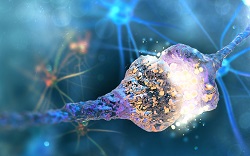Synaptic maintenance in ageing neurons
Proper brain function depends on the fidelity of synaptic transmission. The failure of neuronal synaptic communication is an early indicator of neurodegeneration. When defective proteins are not cleared away completely, their aggregation leads to improper synaptic function. This suggests a defect in the repair mechanisms but the processes that regulate protein rejuvenation at the synapse remain elusive. Scientists of the EU-funded HEALTHYSYNAPSES(opens in new window) project investigated the role of autophagy in neuronal synapses, the cellular mechanisms involved in the degradation of dysfunctional proteins and other cytoplasmic entities. “We worked under the hypothesis that autophagy is central for synapse maintenance and that synaptic autophagy is disrupted during ageing and in neurodegenerative diseases,″ explains project coordinator Dr Patrik Verstreken. Drosophila as a model for studying neuronal synapses Researchers used Drosophila melanogaster as a model organism to screen for novel genes involved in regulating autophagy during ageing. “We had to overcome technical challenges and develop new imaging tools and assays that allowed us to study autophagy at the synapse,″ points outs Dr Vinoy Vijayan, the research fellow who performed the experimental work. A correlative light and electron microscopy approach was developed that facilitated visualisation of autophagy with unprecedented clarity. This, and/or other novel technologies allowed researchers to examine the physiological function of synapses and how levels of autophagy correlate with specific protein turnover. They observed that autophagy is affected in certain age-related conditions and specific synaptic proteins are responsible for this alteration. Interestingly, the synaptic proteins synaptojanin and auxilin, which have been implicated in Parkinson's disease, regulate specific autophagy processes at the synapse. Autophagy regulation at the synapse Project researchers conducted a genetic screen of 5 000 Drosophila mutants and isolated several genes that specifically rescue dysfunctional synaptic autophagy. Through this screen, they have discovered several synaptic genes that are important in regulating synaptic autophagy and maintaining synaptic function. HEALTHYSYNAPSES results showed for the first time that there are compartmentalised forms of autophagy in the neuronal network. They provided evidence that both increased and decreased synaptic autophagy seems to be disadvantageous, suggesting that synaptic autophagy is a very tightly regulated process. As a result, modulating autophagy by targeting specific proteins poses a scientific challenge. Clinical impact Autophagy has attracted a lot of clinical interest recently because it could potentially be used to treat or alleviate neurodegeneration. In particular, researchers plan to focus on pathways and synaptic proteins with unique roles in modifying synaptic autophagy. Dr Vijayan envisions “follow-up studies on the genes that were identified as part of the HEALTHYSYNAPSES genetic screen to develop a thorough understanding of the cellular pathways that regulate autophagy at the synapse.″ Unveiling the mechanisms responsible for synaptic maintenance and health will help formulate strategies for mitigating the undesirable effects of ageing. With millions of Europeans affected by neurodegenerative conditions, restoring synaptic physiology could improve neuronal function and behavioural alterations such as decreased motor function that are seen in neurodegenerative diseases and ageing.







